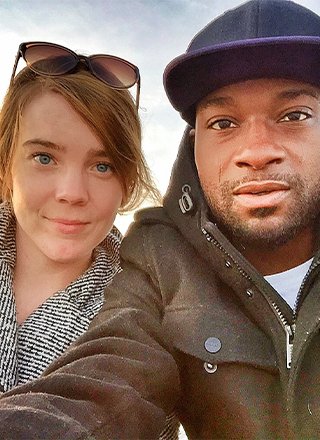The Index of Prohibited Books: Four Centuries of Struggle over Word and Image for the Greater Glory of God by Robin Vose, Reaktion Books, 352 pp.
In September, Americans United and many other organizations across the country observed Banned Books Week, a seven-day campaign committed to raising awareness about the rampant censorship taking place in American libraries and classrooms.
Although Banned Books Week is a relatively recent invention, the issue of censorship spans a far longer timeline and a far wider geographical scope. A newly released book, The Index of Prohibited Books: Four Centuries of Struggle over Word and Image for the Greater Glory of God by Robin Vose, a professor of history at St. Thomas University in New Brunswick, Canada, gives us a glimpse into some of this history and the importance it holds for debates about censorship today.
The Index of Prohibited Books is structured into two well-organized, easy-to-follow parts.
Part I chronicles the early history and development of censorship in ancient Egypt, ancient Greece, ancient Rome and early Christianity. Part II focuses heavily on the content of the Index itself, moving chronologically from its creation by authorities within the Roman Catholic Church in the 16th century to its formal end in 1966, as well as thematically through the types of content it banned.
While Part I of the book provides important grounding for why and how the Index of Prohibited Books came to be, Part II gets to the heart of this censorship project’s goals and ramifications.
Part II of the book is divided into four parts. The first section delves into the Index’s censorship of various translations of the Bible, initially prompted by the sharp increase in scriptural variation brought about by the Protestant Reformation and the growing availability of texts enabled by the advent of the printing press.
The second section of Part II explores the Index’s approach to materials discussing different forms of magic and science, while the third section takes a turn toward the arts and focuses on music, painting, sculpture, philosophy and sexually explicit literature that the Index targeted. Finally, the fourth section inspects the modern enforcement and end of the Index, looking at the various political, cultural and theological factors that contributed to how and why the Index ended.
The book’s central argument is that despite the existence of a codified Index of Prohibited Books, its establishment and enforcement was constantly changing, inconsistently applied and enforced and historically and culturally rooted in particular moments. Ultimately, Vose does a superb job of explaining the nuances, complexities and missing pieces of this narrative, which transforms this book from simply a static recounting of a piece of Catholic doctrine to a dynamic analysis of a cultural and historical phenomenon.
Vose offers a thorough summary of the Index’s contents, but one of the greatest strengths of the book is his treatment of what doesn’t appear in the formal, written record of the Index itself. Because the Index was a Christian (and specifically Catholic) project, it mostly dealt with Christian art, writing and scholarship. However, while the story of the Index of Prohibited Books is ultimately rooted in a Christian-centered perspective, the author skillfully intertwines and explains the harm this index and its enforcers inflicted on non-Christians across the world.
Explaining the violence and erasure that agents of the Catholic Church perpetrated against Indigenous peoples during European colonization, Vose writes, “Non-European texts were often dealt with on the ground by poorly trained local priests who saw any text they didn’t fully understand or control as an inherent threat. All too often, precious manuscripts and inscriptions disappeared more or less completely as a result, along with transmission of oral teachings – permanently cutting colonized peoples off from vital aspects of their age-old spiritual traditions, without so much as leaving any clear trace of their elimination in the records of an official Index.”
Through passages like this and others, The Index of Prohibited Books allows readers to gain important insight into the destruction of non-Christian sources of sacred knowledge, even if the formal record of the Index didn’t acknowledge it in writing.
Finally, the author pays good and necessary attention to the practical ramifications of how much potential was destroyed as a result of the Index, not only through outright censorship but also through preemptive intimidation and threats by Catholic Church officials that led to self-censorship. Although it would be easy to recognize the Index solely as an anti-intellectual project, the damage it did was often intensely physical and had real, material impacts on many of those it punitively restricted.
Expanding on this concept in his chapter on sex, faith and the arts, Vose writes, “The most effective censorship of thought, and creativity, is likely always that which we never even see. When artists never receive the necessary support or resources to pursue their work, their creations simply do not get made. When they are discouraged or threatened, even implicitly, they often find other pursuits. And the more successfully their works are prohibited, the more likely it becomes that audiences will never know that those works ever existed in the first place.”
As this paragraph reveals, in many instances, censorship’s most odious effects don’t even come from direct targeting. Vose shows us that when one author is censored, an entire society suffers.
The Index of Prohibited Books is situated in a particular history, yet Vose’s analysis of it provides us with important context for the present moment. The Catholic Church no longer has a functioning list of banned books, but a body of white Christian nationalists has taken up the mantle of censorship in 21st-century America. Book bans are about power – who has it, who wants it and who ultimately gets it. That’s why Christian nationalists across the country are so insistent on determining what Americans can read in their schools and public libraries. In The Index of Prohibited Books, Vose outlines these dynamics in a way that connects them to the historical specificities of the Index but empowers readers to recognize their broad applicability to current events.
In a 2021 op-ed in The New York Times, author Carmen Maria Machado reflected on the experience of a Texas school district banning her book. “As anyone can tell you – as history can tell you – [censorship of books] is ultimately a fool’s errand,” she wrote. “Ideas don’t disappear when they’re challenged; banned books have a funny way of enduring. But that doesn’t mean these efforts are without consequences.”
As Vose shows us in The Index of Prohibited Books, such endurance has always been true. The books in the Index of Prohibited Books were technically banned, but people were still talking about them back then, and people continue to talk, and even write books, about them today. It is our job to take note of this history and not only talk about book bans but fight against them using our First Amendment freedoms.
Margaret Hamm holds a Master of Theological Studies from Harvard Divinity School and a B.A. in comparative religion and political science from Miami University in Oxford, Ohio. She interned in Americans United’s Communications Department this summer.


